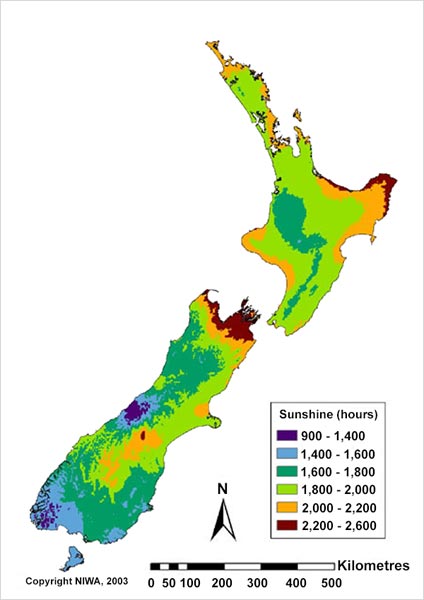
Apart from the far south and west of the South Island, New Zealand receives at least 1,800 hours of sunshine a year, on average. The geographical pattern of sunshine is caused by the interplay of the prevailing westerly winds and New Zealand’s mountain chains. As humid air approaches from the west, it drops rain on the mountains on the west side. It then descends to the east where it warms and the clouds evaporate, resulting in drier, sunnier weather.
Te whakamahi i tēnei tūemi
NIWA – National Institute of Water and Atmospheric Research
This item has been provided for private study purposes (such as school projects, family and local history research) and any published reproduction (print or electronic) may infringe copyright law. It is the responsibility of the user of any material to obtain clearance from the copyright holder.






Tukunga
How many watts/sq m
Steve Atkins (not verified)
17 o Noema 2011
Tāpiritia te tākupu hou